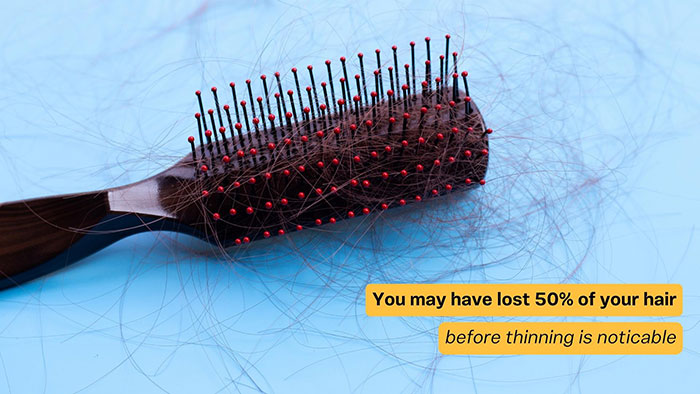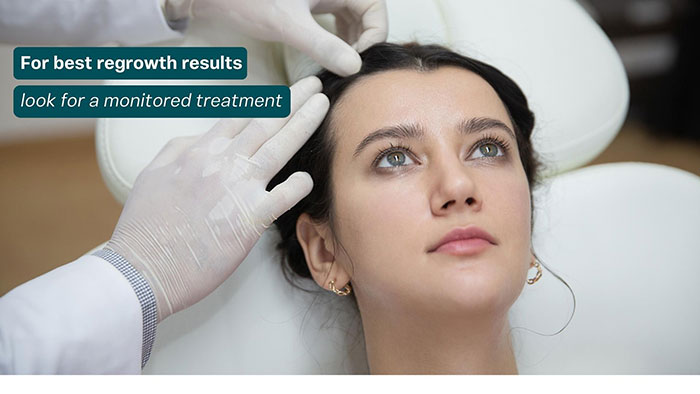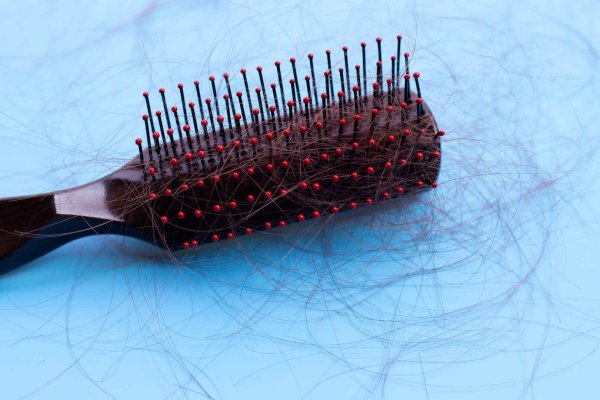No, you’re probably not being paranoid.
Hair loss is a shockingly common condition that affects one-in-five men (20%) in their 20s, about one in three men (30%) in their 30s and nearly half of men (40%) in their 40s. Hair loss is almost as common in women too. By the age of 50, approximately 40% of women will suffer from thinning hair. Thankfully, it is possible to halt your receding hairline and regrow your hair with the right treatment.

Sign of balding
To catch the condition in time, here are some tell-tale signs that you may be going bald:
1. Receding hairline: One of the most common signs of balding is a receding hairline. If your hairline is starting to move back, creating an “M” shape, this could be an early sign of alopecia or pattern baldness.
2. Thinning hair: Another common sign of balding is thinning hair. Alarmingly, you may already have significant hair loss before you really notice it. By the time your scalp is starting to show, you may have already lost 50% of your hair. This means, it’s important to act as soon as possible for best results reversing your hair loss.
3. Bald spots: If you’re noticing bald spots on your head, this is a clear indication that you’re experiencing hair loss. Bald spots can be small, or they can be larger and more noticeable.
4. Excessive hair shedding: It’s normal to lose hair every day, but if you’re shedding a lot more hair than usual, this could be a sign that you’re going bald. Keep an eye on how much hair you’re losing when you brush or wash your hair.
5. Itchy or dry scalp: A dry, itchy scalp can also be a sign of hair loss. If you notice that your scalp is flaky or irritated, this may be due to your hair follicles being damaged or dying.
If you’re experiencing any of these signs, the best thing you can do is speak to a trichologist or doctor who specialises in hair loss. Those at Ashley & Martin provide free consultations where you can have your hair loss assessed to see what’s causing it and how advanced your condition is. Your doctor will then work with you to determine a treatment plan that addresses the root causes of your condition.

Some extra steps you can take to prevent further hair loss:
1. Change your diet: Your diet plays a crucial role in the health of your hair. Eating a balanced diet rich in vitamins and minerals can help strengthen your hair and prevent further hair loss. Include foods such as leafy greens, nuts, and fish in your diet.
2. Use gentle hair products: Avoid using harsh hair products that can damage your hair. Use gentle shampoos and conditioners that are free from sulphates and other harmful chemicals.
3. Avoid heat styling: Heat styling doesn’t cause hair loss, but it can damage your hair. Try to avoid using hot tools such as curling irons and straighteners or limit their use.
4. Get regular trims: Regular trims can help keep your hair healthy and prevent split ends. Aim to get a trim every six to eight weeks.
5. Get the best hair loss treatment for your condition: For best results in treating hair loss, you can’t go past a treatment plan that is monitored and optimised. Specialist hair loss clinics like Ashley & Martin can even offer money-back guarantees on their treatments.
So, while most of us will experience hair thinning at some point, there are treatments available. To stop your hair loss, the most important thing you can do is take action.

